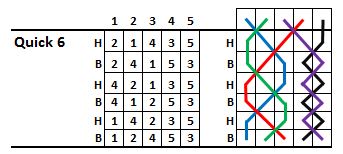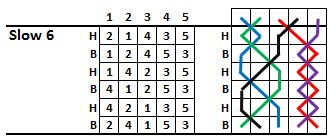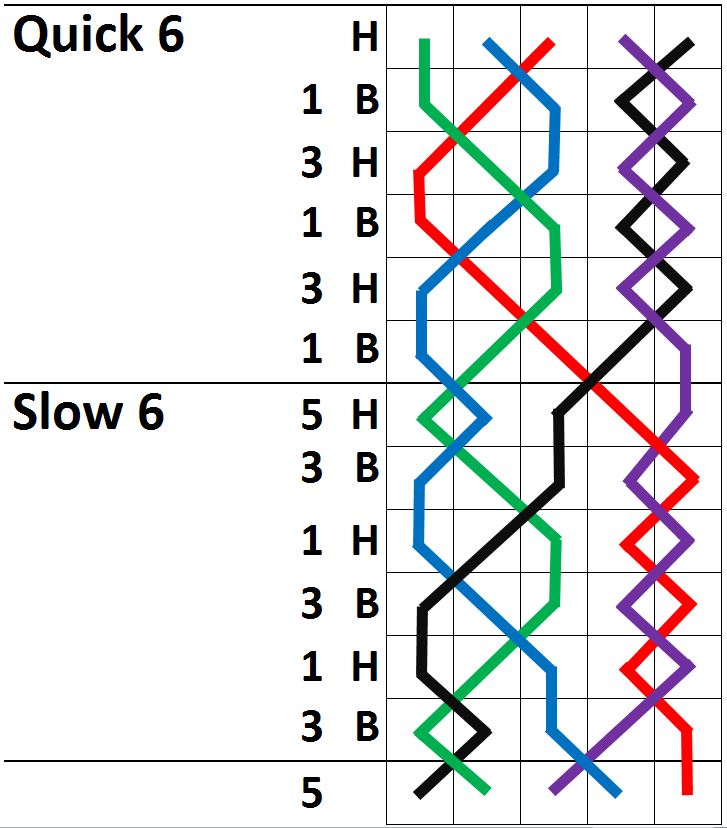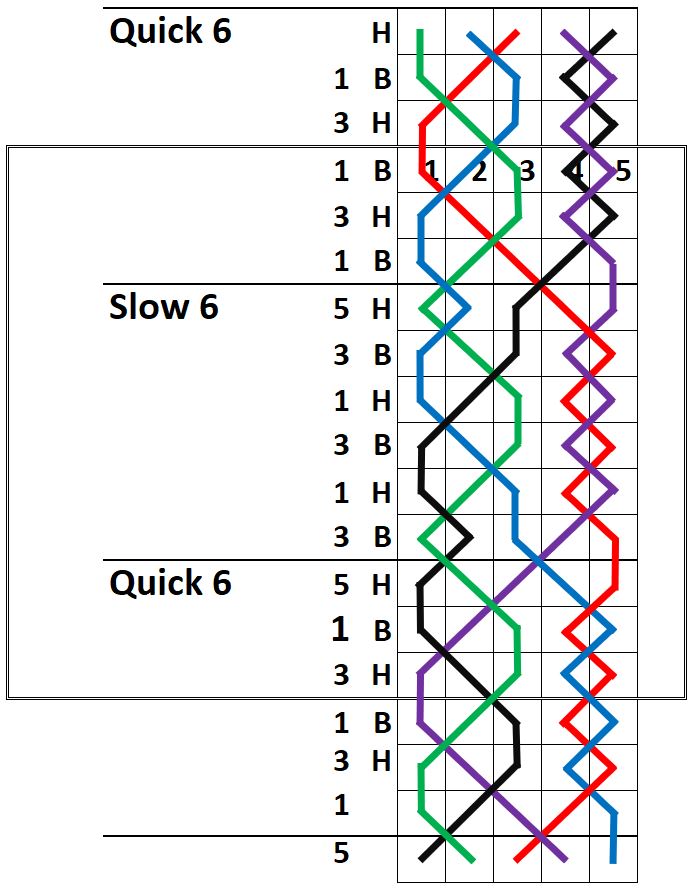Method Building blocks
Stedman has just 3 elements, forward hunting on 3 bells, backward hunting on 3 bells, and dodging related to each block of hunting.
Plain Hunting on 3 bells generates 6 unique change rows, and in Stedman the foward hunting blocks are called a quick 6, and the reverse hunting are called a slow 6.
The method is rung on odd numbers of bells 5, 7, 9 etc., and so the block of 6 changes are associated with dodging by the other working bells, which will for example, be in 4ths and 5ths places on 5 bells.

Diagram: Forward Hunting and dodging.

Diagram: Backward Hunting and dodging.
Stedman is constructed from alternating blocks which are linked by 5ths place, viz::

Diagram: Stedman Twelve.
However, the practical application of the structure is made further complicated by the normal starting point for Stedman, which is the 4th row of a quick 6:

Diagram: Stedman Section.
|

